- All
- [Open Science Policies]
- Auvergne-Rhône-Alpes
- Bourgogne-Franche-Comté
- Brittany
- Centre-Val de Loire
- Corsica
- DROM-COM
- Grand Est
- Hauts-de-France
- Île-de-France
- Normandy
- Nouvelle-Aquitaine
- Occitania
- Pays de la Loire
- Provence-Alpes-Côte D'Azur

Université Côte d’Azur
Université Côte d’Azur has been an experimental university since 1 January 2020 replacing both the Université Nice Sophia Antipolis created in 1965 and the Communauté d’Universités et d’Etablissements Université Côte d’Azur created in 2015.
Université Côte d’Azur now includes 17 major academic establishments around the historic university core to create one of France’s top 10 research-intensive universities.
Since 1 January 2020, Université Côte d’Azur has been officially recognized as an experimental university. This new academic status helps develop a bold and independent strategy based on:
- breaking down the barriers between education, research and innovation,
- developing agility and responsiveness through the increased autonomy of the units,
- the ability to harness the amazing potential for diversity represented by its 17 members.
It is based in particular on setting up University Research Schools and giving them this essential role of redesigning university architecture. It also accelerates the implementation of a “Bac-3/Bac+3” principle aimed at effectively combating failure at schools and universities. Finally, it opens up the field of possibilities on the density and diversity of public-private partnerships and on the university’s overall funding model.
HAL portal
Open Science Policy
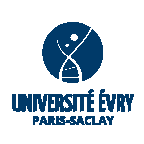
Université Évry Val Paris-Saclay
Université d’Évry is one of 4 new universities created during the 1990’s in Île-de-France.
It strives to rise to challenges through research, and to share new knowledge in order to prepare the youth for upcoming challenges.
Université d’Évry offers education in most fields, except for health studies, from bachelor to doctorate degrees. It also proposes professional education related to the socio-economic environment: the university ends up with the highest number of higher education apprentices in France.
Université d’Évry is a part of Université Paris-Saclay, as an associated member. This group of universities also comprises UVSQ (Université de Versailles Saint-Quentin-en-Yvelines), 4 Grandes Écoles, the Institut des Hautes Études Scientifiques, and 6 national research organisations. It aims to construct a world-class intensive research university, with 15% of French research, and to give access to higher education to the masses. Most diplomas delivered by Université d’Évry are now labelled “Université Paris-Saclay”.
HAL portal
Open Science Policy
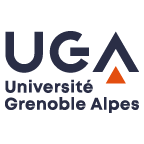
Université Grenoble Alpes
Anchored on its territory, multidisciplinary and open to the international, Université Grenoble Alpes brings together the main public higher education institutions of Grenoble and Valence. In association with the national research organizations and the international research facilities present on its territory, it builds its innovation policy on a global scale. As a driving force for progress and a laboratory for initiatives, it collaborates with its many partners to accompany the evolution of society.
HAL Portal
Open Science Policy
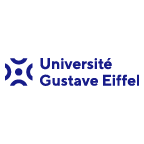
Université Gustave Eiffel
Université Gustave Eiffel is a multidisciplinary university of national importance. It also has the distinction of being the first institution to bring together a research institute, a university, a school of architecture and three engineering schools. By pooling its many strengths in the areas of education and research, Université Gustave Eiffel aims to develop by pursuing a strategy based on complementarity between its founding institutions. By creating better synergies in this way, the university can offer the groups it serves a wider range of expertise. Educating young people, employees or citizens at all levels, providing the whole of society with scientific insights ̶ the ultimate aim of Université Gustave Eiffel is to help raise everyone’s level of qualification.
Université Gustave Eiffel is active in many areas of research. In particular, it accounts for a quarter of French research on the cities of tomorrow and brings together multidisciplinary capabilities to conduct quality research for the benefit of society, offer education tailored to the social and economic world and support public policies.The institution’s main remits are:
- Initial and in-service education, with a strong focus on apprenticeship education.
- Research (fundamental and applied) and innovation.
- Expert appraisals, public policy support and standardisation.
- Openness to society and international cooperation.
HAL portal
Open Science policy
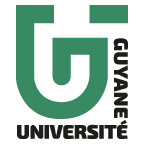
Université de Guyane
Formerly known as the Pôle Universitaire de Guyane, Université de Guyane took its full functions on January 1st, 2015. This major institutional evolution results from a decision by the French Ministry for Higher Education and Research to give the Pôle Universitaire de Guyane a full autonomy on its development project.
The training offer matches the socio-economic stakes in Guyane: tropical health, biodiversity, natural resources management, cross-cultural topics, multilinguism, social integration…
Read more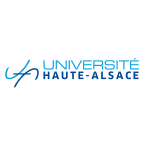
The Université de Haute-Alsace
The University of Haute-Alsace has 5 campuses in Mulhouse and Colmar. More than 11,000 students follow almost 200 courses. There are also about fifteen research laboratories and research units on the different campuses.
These laboratories are divided into 3 research areas:
- Chemistry, Functional Materials and Environment,
- Humanities, Societies and Sustainable Economies,
- Intelligent Systems, Digital Technologies, Processes and Advanced Textiles.
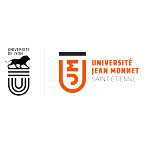
Jean Monnet University
It stands out as an institution of higher education and essential research in the Lyon Saint- Étienne metropolitan area thanks to its emphasis on partnerships with the higher education institutions of Saint-Étienne and Lyon, the City and the Metropolitan Area, and also with businesses.
A multidisciplinary university offering health courses, UJM is present throughout the city of Saint-Étienne: with its 20,000 students, Jean Monnet University supplies young talent and excellence to its 5 campuses and the local area.
UJM also shines internationally. Its attractiveness lies in a course offering in line with its economic, cultural and social ecosystem and open to the world, with quality classes taught in English, and distance learning courses abroad using digital technology.
Its multidisciplinary education offering allows students to access a diploma in 5 major areas of education: Arts, Letters, Languages/Humanities and Social Sciences/Law, Economics, Management/Science, Technology/Health.
With over 400 international cooperation agreements, UJM promotes openness and knowledge-sharing with a network of partners throughout the world. Moreover, it contributes to developing the Transform4Europe (T4EU) initiative in order to offer inward and outward intra-European mobility to students and its teaching and administrative staff.
HAL portal
Open Science policy
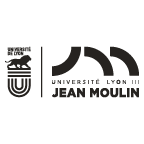
Jean Moulin Lyon 3 University
Located in the centre of Lyon – a UNESCO World Heritage Site and the second largest university town in France – and in Bourg-en-Bresse (Ain), Jean Moulin Lyon 3 University offers a learning and research space focused on the humanities and social sciences with programmes ranging from two-year foundation degrees to PhDs (Bac +2 to Bac +8). With seven doctoral schools and 19 research units, the University develops interdisciplinary research linked to major social issues.
A member of the University of Lyon – Community of Universities and Institutions (COMUE) – it welcomes more than 29,000 students and offers a wide range of career-oriented programmes within a high-quality learning framework conducive to intellectual and personal development.
HAL portal
Open Science policy
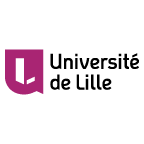
University of Lille
The University of Lille occupies a strategic position at the heart of Northern Europe. It boasts an outstanding cultural and scientific heritage that is etched into the Hauts-de-France Region’s history, and has established itself as a key player in the region for training, research and innovation, and commitment to social issues.
Portail HAL
Open Science Policy
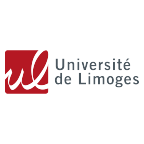
University of Limoges
Each year, the University of Limoges hosts more than 2000 international students, i.e. more than 15% of the student body at the University of Limoges. More than a hundred research lecturers and 200 international doctoral candidates have also chosen the University of Limoges. With a strong network of international partners, a dynamic former network and holder of an Erasmus charter, the University of Limoges is resolutely open to the world and welcomes you.
At the heart of Europe, the University of Limoges is an important multidisciplinary higher education cluster in an environment more conducive to scientific development. Open, it is a place brimming with interactions, with a diverse student population, efficient hosting structures, close-knit teams, training based on research of a very high level and for well-identified opportunities. Its scientific excellence, with its state of the art laboratories and major partnerships, contributes to inventing the world of the future.
Read more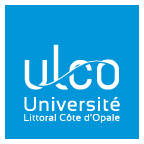
Université du Littoral Côte d’Opale
ULCO was created in 1991, as part of new universities program, from older universities establishments.
Read more
Université de Lorraine
HAL Portal
Open Science policy
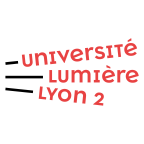
Université Lumière Lyon 2
Since its creation in 1973, the Université Lumière Lyon 2 has been committed to a strong and demanding vision of Higher Education and Research, driven by a spirit and values that are also its trademark: human and humanistic, committed and supportive, democratic and civic-minded.
A founding member of the aggregation of universities and higher education institutions known as the COMUE Université de Lyon, the Université Lumière Lyon 2 welcomes nearly 30,000 students on two campuses to its bachelor’s, master’s, and doctoral degrees.
With a varied range of training courses, the Université Lumière Lyon 2 combines openness and success in order to empower its students to actively develop their critical thinking skills in a multidisciplinary context in order to be able to address the societal challenges of the future.
Its thirteen faculties and institutes offer a wide range of courses in four areas of education and research: Arts, Literature, Languages / Law, Economics, Management / Humanities and Social Sciences / Sciences, Technology, Health.
Covering a very broad spectrum of disciplines in the Human and Social Sciences, the Université Lumière Lyon 2 is developing cutting-edge research in each of its fields. Sensitive to the concerns and issues of society such as gender, education, work, the city, disability, it participates fully in social progress through its research programs and numerous actions to disseminate knowledge.
With thirty-two laboratories and eight research federations, covering the fields of Letters – Languages – Human and Social Sciences, the Université Lumière Lyon 2 is committed to innovation, interdisciplinarity, partnership and international openness. Through the projects developed and carried out by its 936 professors and researchers, it promotes dialogue between the human and social sciences and the hard sciences, and places research at the heart of contemporary scientific and societal issues.
HAL portal
Open Science policy
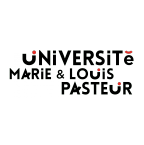
Université Marie & Louis Pasteur
If we count the trainees, the University of Franche-Comté has nearly 30,000 learners, of which 21.07% are international (130 nationalities are represented). The actual students are 24,670.
More than half (57%) of these students are female students and almost a third are higher education scholarship holders.
The University of Franche-Comté also has 1,289 teachers, including 775 teacher-researchers and university hospital teachers, 272 secondary school teachers and 242 contractors, 1,095 BIATSS staff and 2,300 external contributors.
HAL portal
Open Science Policy

University of Montpellier
For the past 800 years, the University of Montpellier (UM) has strived to address scientific and societal challenges.
With 16 schools and institutes, and 78 research structures, UM brings together a vast community of knowledge ranging from science, technology, medicine, pharmacy, physical and sports activities, to law, political science, economics and management.
UM is a research-intensive university that plays a leading role in the Occitanie region’s dynamism and is resolutely open towards the world. It receives international recognition in numerous scientific fields such as biology and health, agri-environment, chemistry, information and communication sciences and technologies, law and management. Today, with its partners, it leads an ambitious internationally oriented program to further promote Montpellier as a “University of Excellence” acting as a true European portal towards the southern countries.
Read more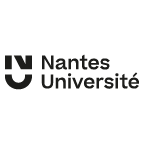
Nantes Université
Nantes Université is a higher education and research institute that offers a unique, globally-ranked university model in France. It brings together a university organised into faculties, three ‘grandes écoles’ (Centrale Nantes, École des Beaux-Arts Nantes Saint-Nazaire, and École Nationale Supérieure d’Architecture de Nantes), a university hospital (CHU de Nantes), a technological research institute (IRT Jules Verne), and a national research body (Inserm).
By pooling together their strengths, these key players aim to develop areas of excellence in Nantes research, in particular to design and build the future of healthcare and industries. They provide new training opportunities for students by breaking down the barriers between ways of thinking, cultures, and practices. Nantes Université is a sustainable institution committed to and involved in the evolution of society. It fosters a unique approach to promote open science, open education and open innovation.
HAL portal
Open Science Policy
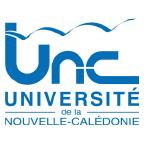
University of New Caledonia
The University of New Caledonia (UNC) is a multidisciplinary university present in New Caledonia. It was created in 1987 under the name French University of the Pacific, in reference to the unique entity it then constituted with French Polynesia.
In 1999 the university became independent of French Polynesia and became the University of New Caledonia.

University of Orléans
The University of Orléans is characterised by its multi-disciplinarity.
The university has 3 faculties, 1 engineering university school (Polytech), 4 University Institutes of Technology (IUT), 1 Higher Schools for Professors and Educators (INSPE), 1 Observatory of the Sciences of the Universe (OSUC), 1 University school of physiotherapy (EUK).
Over 19,000 students, including over 2,000 foreign students, attend one of the university’s sites.
Every year its international focus gets stronger. Its capacity for innovation is reflected in the dynamism of the research it leads and in the technology transfers to regional, national and international companies.
The wide range of study programmes offered by the University, which includes many vocational courses, is developed with a strong connection with Research. Thanks to schemes to receive and help students and adults alike with their vocational integration, the University of Orléans is a key actor in territorial development.
HAL portal
Open Science Policy
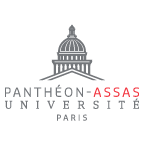
Panthéon-Assas University
Paris-Panthéon-Assas university offers courses in law, political and social sciences (media and communication), management and economics.
The university has a number of research teams in law, political science, economics, management and information and communication sciences. The Centre d’études et de recherches de science administrative and the Institut d’histoire du droit are two research centers affiliated to the CNRS.
Read more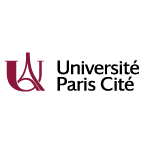
Université Paris Cité
At the heart of a global network of knowledge and innovation, Université Paris Cité is France’s leading multidisciplinary university. It covers a wide range of disciplines, with one of the most comprehensive and ambitious educational offerings available in the world. Université Paris Cité is part of the incarnation of a world city, aware of its place and missions, open to youth and knowledge.
Born in 2019 from the merger of the universities of Paris Diderot, Paris Descartes and Institut de physique du globe de Paris, the ambition of Université Paris Cité is to lead and develop an exceptional potential to meet the challenges of tomorrow’s society.
With a recognized international standing, as well as a strategic portfolio of privileged academic partners throughout the world, it offers its students state-of-the-art, innovative courses in the following fields:
- Arts, Humanities and Languages,
- Human, Economic and Social Sciences,
- Science and Technology,
- Medicine , Dentistry, Pharmacy and Nursing
Université Paris Cité is fully engaged in an experience that brings together thought leadership, pedagogical innovation in education, and excellence in research at the graduate level.
Located on some twenty campuses and research sites, Université Paris Cité has an exceptional heritage mainly located in Paris and its inner suburbs. Between history, prestige and modernity, Université Paris Cité is fully integrated into its urban environment.
HAL portal: https://hal-univ-paris.archives-ouvertes.fr/
Read more